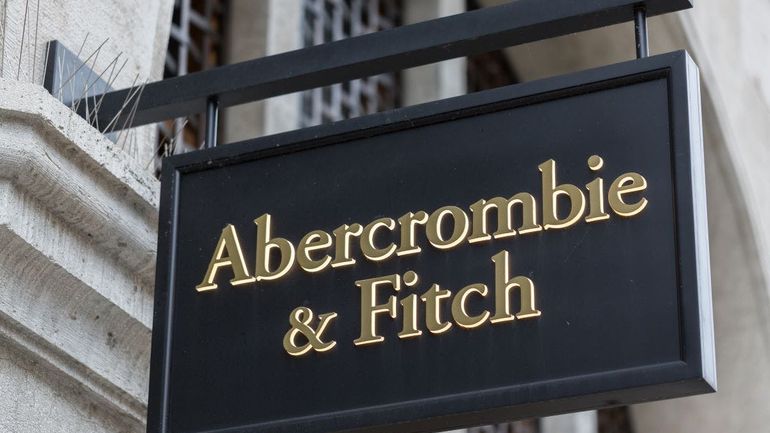
Abercrombie & Fitch's Strategic Shift Towards Brand Building and Balanced Promotions

Discover how Abercrombie & Fitch's focus on brand identity and strategic investment at every level of the sales funnel has led to remarkable success in the retail industry.
Credit: Chris Redan / Shutterstock
Abercrombie & Fitch has achieved record first quarter results by reducing promotions and clearly defining the identity of each of its brands.
The clothing retailer reported net sales of $1.02 billion in Q1 2024, marking the first time in its history that it has surpassed a billion in sales in a single quarter. This impressive growth of 22% from the previous year's results showcases the company's success.
CEO Fran Horowitz shared with investors on a call today (29 May) that both the women's and men's divisions of the company experienced growth across all brand families, including Abercrombie + Fitch and Hollister. She also mentioned that entering Q1 with a clean inventory position allowed for fewer promotions, leading to a 66.4% gross profit margin improvement, up 540 basis points.
Horowitz highlighted the company's efforts in defining the unique identities of each brand and the specific customer demographics they cater to. This strategic approach has presented a significant global market opportunity, which the company is leveraging through relevant product assortments and a strong brand presence.
In the quarter, the operating margin was at 12.7%, showing an increase of 860 basis points compared to the previous year. Net sales for the Abercrombie brand went up by 31% year-over-year, while the Hollister brand saw a growth of 12% year-over-year.
The marketing spend for the quarter rose to 5% of total sales, up from 4% at the same time last year. CFO Scott Lipesky referred to this increase as a "sweet spot" that the brand aims to maintain. He emphasized the importance of not only driving short-term business but also focusing on long-term growth, with a strong emphasis on customer acquisition and brand engagement.
We not only aim to drive the business short-term but also focus on long-term growth. Our main priority is customer acquisition and engaging people with our brand. - Scott Lipesky, CFO, Abercrombie + Fitch
Horowitz mentioned that what makes their current marketing expenditure exciting is that, thanks to the strength of their brand, they are able to allocate this spend across the top, middle, and bottom of the sales funnel. Although Hollister's marketing spend was reduced at the beginning of last year, it has gradually increased again. Horowitz is optimistic about the brand's future in the challenging teen clothing market, expecting it to mirror the successful strategy employed by Abercrombie + Fitch.
She explained, "We have been building Abercrombie's brand for years, starting from the bottom and middle of the funnel and now focusing on the top to attract more customers. We plan to follow the same approach for Hollister."
A transformed brand
Abercrombie & Fitch used to be a lesson for marketers to learn from. It was once the go-to brand for teenage fashion, but its exclusive approach, targeting only the "attractive, all-American kid" as mentioned by former CEO Michael Jeffries, became outdated in the 2010s. This led to the brand hitting a record low stock price in 2017 after 17 years.
Horowitz joined the business in 2017 when it was struggling, but he has successfully rebranded the company. The brand used to target a small group of teenagers, but now it appeals to working millennials, with the Sloane tailored pant gaining popularity on social media. Additionally, he has also repositioned the teen-focused Hollister brand.
The turnaround of the company has been impressive, especially in terms of how quickly it happened. Over the past year, the stock price has surged by an impressive 245%, surpassing the growth of AI giant Nvidia. Despite being priced lower, the company consistently exceeded expectations.
"Our company had a great year in Fiscal 2023," she informed investors. "We achieved a 16% increase in revenue and maintained an operating margin of over 11%. These outcomes were made possible thanks to the dedication of our teams in revamping our operational approach and strategies."
Now that the brand's transformation appears to be successful, it is setting its sights on global expansion, with a focus on entering key markets such as the UK and Germany, as well as China in the APAC region.
Horowitz mentioned that strategic investments were made in marketing to boost brand awareness in two important EMEA markets. He noted a significant increase in digital engagement conversion from recent marketing campaigns, as well as the positive impact of new store experiences, especially in Greater London.
Editor's P/S:
Abercrombie & Fitch's remarkable financial turnaround, driven by a renewed brand strategy and reduced promotions, is a testament to the power of adaptability and customer-centricity in the retail industry. The company's efforts in clearly defining the identities of its brands and catering to specific customer demographics have fueled its growth, demonstrating the importance of creating strong brand connections in today's competitive market.
The strategic allocation of marketing expenditure across the sales funnel, from brand awareness to customer acquisition, highlights the importance of a balanced approach to long-term growth. Abercrombie & Fitch's successful brand transformation and ambitious plans for global expansion serve as a model for other retailers looking to stay relevant and profitable in the ever-evolving fashion landscape.







